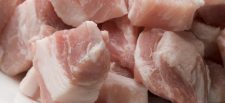The Office for National Statistics (ONS) has released the latest consumer price inflation figures, reporting that food inflation rose to 3.3% in January, up from 2% in December.
Prices for this division rose by 0.9% in January 2025, up from a monthly fall of 0.4% a year ago. The annual rate of 3.3% in January 2025 compares with 7.0% to January 2024.
ONS said there were upward contributions to the change in the annual rate of inflation between December 2024 and January 2025 in seven of the 11 food and non-alcoholic beverages classes. This is because prices rose this year but either fell or rose at a slower rate between the same two months last year.
Contributions came from:
- Meat (0.04 percentage points (pp))
- Bread and cereals (0.03pp)
- Fish (0.01pp)
- Milk, cheese and eggs (0.01pp)
- Sugar, jam, honey, syrups, chocolate and confectionary (0.01pp)
Balwinder Dhoot, director of industry growth and sustainability, The Food and Drink Federation (FDF), said: “Whilst food and drink manufacturers continue to work hard to keep costs down for consumers, we saw food and drink price inflation surge to 3.3% in the first month of 2025, up from 2.0% in December 2024. Rising energy and water bills as well as higher commodity prices, like dairy and cocoa, are all having an impact on production costs.
“Unfortunately, this month isn’t likely to be a flash in the pan for rising food and drink prices. We’re yet to see the full impact of increasing labour costs, with changes to both National Minimum Wage and National Insurance Contributions coming into force in April, and we expect to see this filter through to shoppers over the coming year. We urge Government to work with industry to simplify regulation and bring business costs down to help protect consumers from rising prices.”









